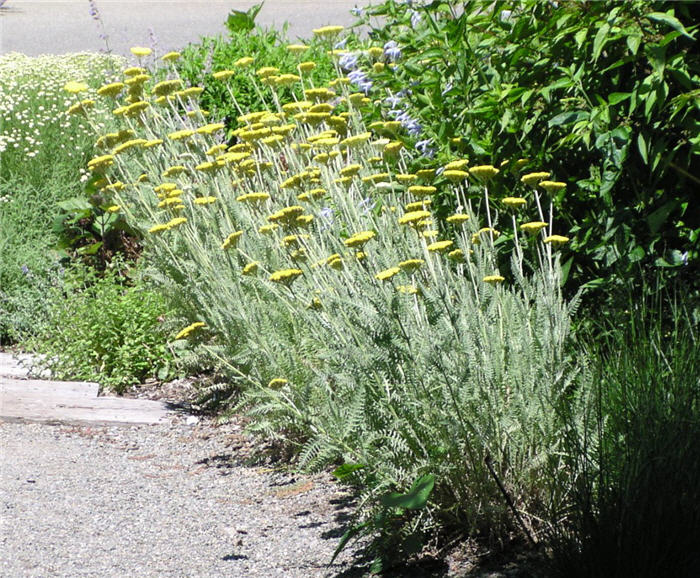| Botanical Name: Achillea 'Coronation Gold' | |
| Common Name: Coronation Gold Yarrow |

-
Anatomy
-
Culture
-
Design
Plant Type
Perennial
Height Range
3-6'
Flower Color
Gold
Flower Season
Summer
Leaf Color
Grey Green
Bark Color
n/a
Fruit Color
n/a
Fruit Season
n/a
Sun
Full
Water
Very Low, Low
Growth Rate
Fast
Soil Type
Sandy, Clay, Loam, Rocky, Unparticular
Soil Condition
Average, Poor, Well-drained, Dry
Soil pH
Neutral
Adverse Factors
Invasive
Design Styles
English Cottage, Meadow, Mediterranean, Ranch, Spanish
Accenting Features
Showy Flowers, Unusual Foliage
Seasonal Interest
Summer, Fall
Location Uses
Perennial Border, Foundation, Patio, Raised Planter, With Rocks
Special Uses
Container, Cut Flowers, Hedge
Attracts Wildlife
Birds, Butterflies
Information by: Stephanie Duer
Photographer:
Photographer:
-
Description
-
Notes
'Coronation Gold' is an upright, clump-forming hybrid yarrow, with deeply-dissected, fern-like, aromatic, silvery to gray-green foliage and tiny, long-lasting, bright mustard-yellow flowers which appear in dense, flattened, plate-like clusters up to to 4 inches across. Blooms through the summer on stiff, erect stems typically rising 3 to 4 feet tall, slightly higher than the foliage. A very rigid, upright yarrow, slightly less invasive than others.
Many different cultivars of Yarrow are available, with different flower colors, including yellows, reds, peaches, and pinks. Yarrow makes a good ground cover when mowed, and tolerates a fair amount of foot traffic. Divide in the spring every few years as the centers can sometimes melt out. Grow in full sun to part shade in well drained soils. Tolerates clay soils. Yarrows are best not planted next to slower-growing and smaller perennials, as they may overtake and overwhelm them.